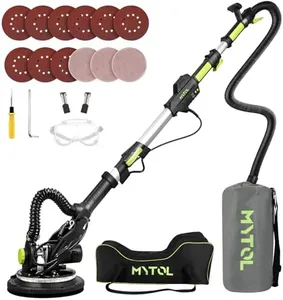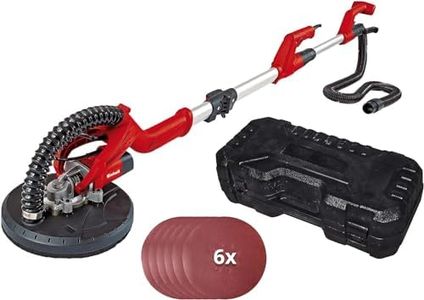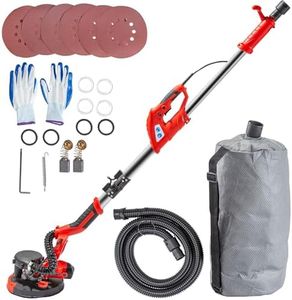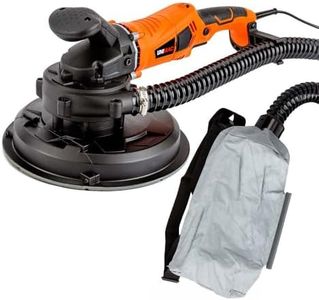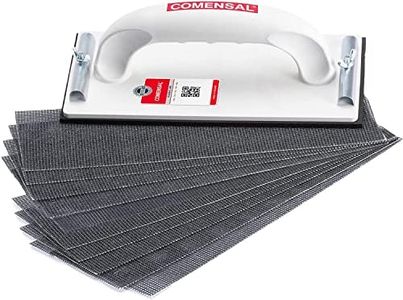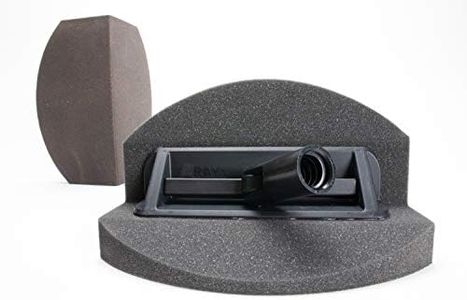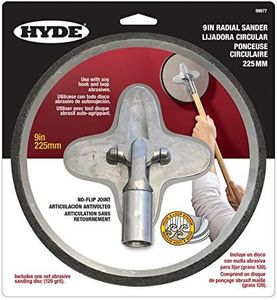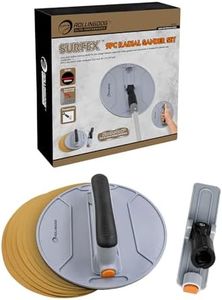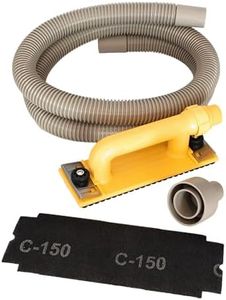We Use CookiesWe use cookies to enhance the security, performance,
functionality and for analytical and promotional activities. By continuing to browse this site you
are agreeing to our privacy policy
10 Best Drywall Sanders
From leading brands and best sellers available on the web.Buying Guide for the Best Drywall Sanders
Choosing the right drywall sander is important for achieving smooth, even walls while reducing physical effort and mess. Start by understanding your workspace, the frequency of your projects, and your experience level. A good drywall sander will save you time, minimize dust, and help you achieve professional-looking results, so it's essential to consider the main features before making your decision.Type (Manual vs. Electric)Drywall sanders come in two main types: manual and electric. Manual sanders are simple, hand-held tools requiring physical effort, best for small patch jobs or finishing touches. Electric sanders do most of the work for you and are better suited for larger areas or frequent use. If you plan to work on big projects or want to reduce fatigue, electric options offer more convenience. For occasional, small-scale work, a manual sander may be sufficient.
Dust CollectionDust collection refers to how well the sander captures and contains the fine dust created during sanding. This is important because drywall dust can be messy and harmful if inhaled. Most electric sanders come with a built-in dust collection system or a vacuum attachment. Look for sanders with an effective dust collection feature if you're working indoors or want to keep cleanup easy. If you have good ventilation or don't mind dust, this may be less of a priority.
Sanding Head Shape and SizeThe size and shape of the sanding head determine how easily you can smooth different areas. Larger heads cover more surface quickly, making them efficient for big, flat walls, while smaller or round heads are better for corners or tight spaces. Choose the head size that matches the primary surfaces you'll be working on; larger heads for walls and ceilings, or smaller heads for detailed work.
Adjustable Handle LengthAdjustable handle length allows you to reach high walls or ceilings without a ladder. This feature is especially useful for overhead sanding or hard-to-reach spots. Some sanders have handles that extend, while others are fixed. Consider how much ceiling or high wall work you have; if you regularly need to reach up high, an adjustable handle will make the job safer and more comfortable.
Variable Speed ControlVariable speed control lets you adjust how fast the sander operates. Lower speeds give more control for delicate areas, while higher speeds allow for faster material removal. If you're new to drywall sanding or working with various surfaces, a sander with adjustable speed gives you the flexibility to tailor the tool to each situation.
WeightWeight affects how easy the sander is to handle over long periods. Heavier sanders can tire your arms, especially when working overhead, while lightweight models are easier to maneuver but may not offer as much power. Think about how long you'll be using the sander at a time and whether you can comfortably support the tool for the duration of your work.
